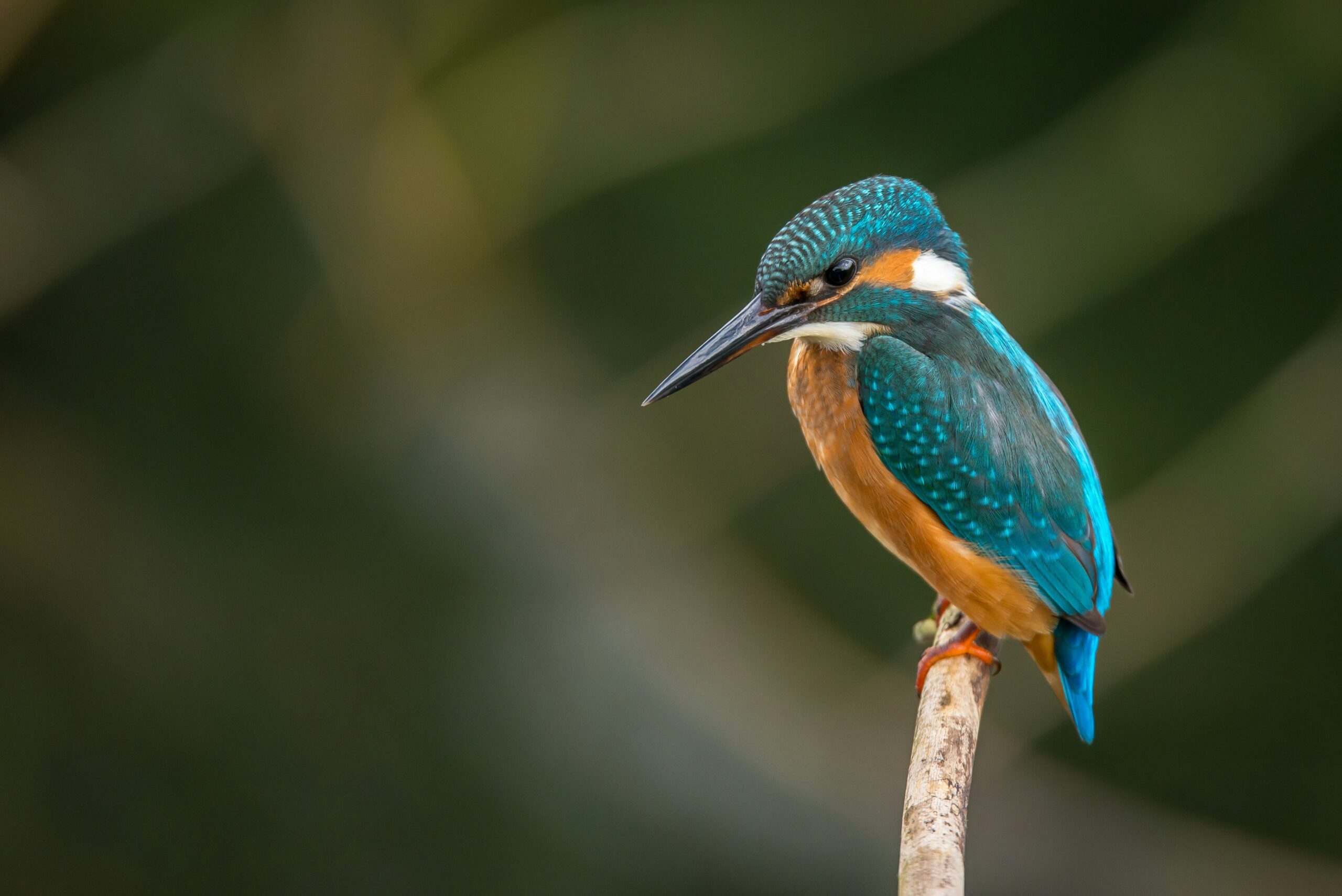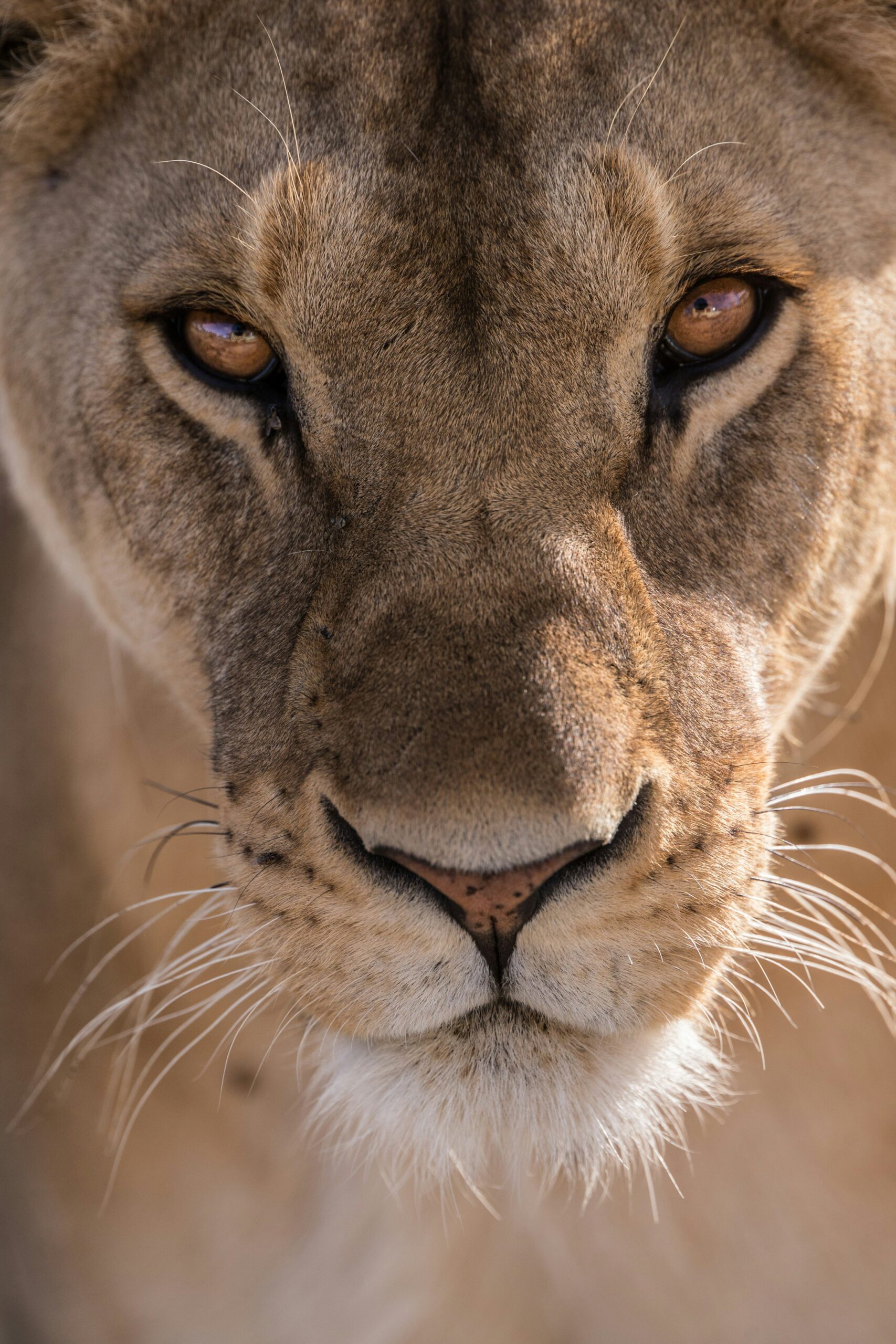Imagine yourself hiking amidst the breathtaking scenery of Mount Shasta, surrounded by majestic peaks and lush forests. As you traverse the trails, you can't help but wonder about the incredible wildlife that calls this mountain home. From elusive deer and graceful eagles to mischievous squirrels and curious rabbits, the trails of Mount Shasta offer an abundance of opportunities for wildlife spotting. In this article, we will uncover the best hiking trails that will fulfill your desire to connect with nature and witness the wonders of wildlife in their natural habitat.

Understanding Mount Shasta
Geographical location of Mount Shasta
Mount Shasta, a majestic volcano, is located in the southern part of the Cascade Range in Northern California. Standing at an impressive elevation of 14,179 feet, it is the second tallest peak in the Cascades and the fifth tallest in California. Surrounded by the Shasta-Trinity National Forest, the mountain offers breathtaking views and a rich ecosystem for wildlife.
Brief history of Mount Shasta
Mount Shasta has a fascinating history that dates back thousands of years. It holds great cultural and spiritual significance to Native American tribes, including the Shasta, Karuk, and Modoc tribes. These tribes believe that the mountain is a sacred place and contains powerful spiritual energy.
European explorers and settlers began to arrive in the area in the mid-19th century, attracted by the natural beauty and resources. In 1851, Mount Shasta became the focus of attention when the first recorded ascent of the mountain was made by a group of climbers. Since then, it has been a popular destination for hikers, climbers, and nature enthusiasts.
Terrain features and climate of Mount Shasta
Mount Shasta possesses diverse terrain features that make it a haven for wildlife. The mountain boasts picturesque alpine meadows, dense forests, and sparkling streams. The higher elevations are characterized by snow and glaciers, creating a challenging yet breathtaking environment.
The climate on Mount Shasta varies depending on the altitude. In general, the lower slopes enjoy a Mediterranean climate, with hot, dry summers and mild, wet winters. As you ascend the mountain, the temperature drops significantly, and the alpine climate prevails. Snowfall is abundant in the winter, offering a striking contrast to the surrounding landscape.
Wildlife in Mount Shasta
Diverse species inhabiting Mount Shasta
Mount Shasta provides a habitat for a wide array of wildlife species. From the lower slopes to the alpine regions, various animals call this mountain home. Mammals such as black bears, mountain lions, mule deer, and grey foxes can be spotted, especially in the forested areas. Birdwatchers will delight in the sight of golden eagles, Steller's jays, and many other avian species that soar through the sky. Smaller creatures like squirrels, chipmunks, and rabbits add playful charm to the mountain's ecosystem.
Optimal times for wildlife spotting
To increase your chances of wildlife spotting on Mount Shasta, it is important to know the best times to explore. The early morning and late evening hours are usually the most active for many animals. Spring and summer are especially vibrant seasons, as the mountain comes alive with migratory birds, blooming wildflowers, and newborn animals. Fall also offers excellent opportunities for wildlife spotting, as many species prepare for the approaching winter.
Tips for wildlife spotting
When embarking on a wildlife spotting adventure on Mount Shasta, keep these tips in mind to enhance your experience. First and foremost, maintain a safe distance and refrain from approaching or feeding any animals. Binoculars or a camera with a telephoto lens will enable you to observe wildlife without intruding on their natural behaviors. Remember to be patient and still, as sudden movements and loud noises can scare away animals. Lastly, be respectful of their habitat and leave no trace of your visit to ensure the protection of their delicate ecosystem.
Bunny Flat to Helen Lake Trail
Description and length of the trail
The Bunny Flat to Helen Lake Trail is a popular route for hikers and wildlife enthusiasts alike. This approximately 6-mile trail starts at Bunny Flat, which is accessible via Everitt Memorial Highway. As you ascend, the trail winds through enchanting alpine forests and offers stunning views of the surrounding mountains. The endpoint of the trail, Helen Lake, sits at an elevation of around 10,400 feet and provides a remarkable vantage point for wildlife spotting.
The wildlife species commonly spotted
Along the Bunny Flat to Helen Lake Trail, hikers have the opportunity to encounter various wildlife species. Keep an eye out for mule deer grazing in the meadows, as well as squirrels and chipmunks scurrying among the trees. The higher sections of the trail offer a chance to spot majestic golden eagles soaring overhead. If you're lucky, you may even catch a glimpse of the elusive gray fox or black bear.
Seasons offering best wildlife viewing opportunities
To maximize your wildlife viewing experience on the Bunny Flat to Helen Lake Trail, consider visiting during the summer months. From June to September, the meadows bloom with vibrant wildflowers, attracting an abundance of bird species and butterflies. Additionally, this period sees increased wildlife activity, as animals venture higher up the mountain in search of food and water.
North Gate Trail
Unique features of North Gate Trail
The North Gate Trail, a hidden gem on Mount Shasta, offers visitors a remarkable wilderness experience. What sets this trail apart is its tranquil ambiance and stunning vistas. As you hike along the trail, you will be captivated by the beauty of the surrounding Cascade Mountains and the serene atmosphere of the alpine forests.
Wildlife species often seen along the trail
The North Gate Trail is home to a diverse range of wildlife species. Keep your eyes peeled for black-tailed deer and gray squirrels, which are frequently encountered on this trail. Birdwatching enthusiasts will have the opportunity to spot western tanager, white-headed woodpecker, and red-tailed hawks, among other avian delights. You may also come across smaller mammals like rabbits and chipmunks.
Access points and navigation tips
To access the North Gate Trail, make your way to the Northgate Trailhead, located near the town of Weed. The trailhead is easily accessible and well-marked, ensuring a smooth start to your adventure. As you embark on the trail, it is essential to bring a detailed map or use a reliable navigation device, as the trail can become less defined at higher elevations. Being prepared with proper hiking gear and supplies is also crucial for a safe and enjoyable experience.

Clear Creek Trail
Terrain details and distance of Clear Creek Trail
The Clear Creek Trail is renowned for its challenging terrain and spectacular scenery. This approximately 9-mile trail takes hikers on a journey through a diverse landscape, including dense forests, rocky slopes, and a cascading waterfall. The trail starts at the Bunny Flat Trailhead and ascends to the Red Banks, providing breathtaking views along the way.
Tips for wildlife spotting
While hiking the Clear Creek Trail, keep your eyes open for signs of wildlife activity. Look for tracks, droppings, and scratch marks on trees, which can indicate the presence of animals. Take note of any rustling or movement in the vegetation, as it may signal the presence of birds, squirrels, or other small creatures. Being observant and attuned to the natural surroundings will greatly increase your chances of spotting wildlife.
Wildlife diversity on the trail
The Clear Creek Trail offers a wealth of wildlife diversity for those willing to explore its challenging terrain. Mule deer and black bears are commonly spotted along the lower sections of the trail, often foraging for food. As you ascend to higher elevations, keep an eye out for majestic golden eagles soaring through the sky. You may also encounter smaller animals, such as ground squirrels and pikas, which thrive in the rocky alpine environment.
Squaw-South Gate Meadow Trail
Best times to spot wildlife on Squaw-South Gate Meadow Trail
To maximize your wildlife spotting opportunities on the Squaw-South Gate Meadow Trail, plan your hike during the early morning or late evening hours. This is when many animals are most active, making it easier to catch a glimpse of them. The serene atmosphere of the meadow at these times enhances the chances of encountering various bird species and mammals.
Directions and hiking difficulty
To access the Squaw-South Gate Meadow Trail, head towards the Bunny Flat Trailhead and continue past Bunny Flat for approximately 6 miles. Look for the sign indicating the trailhead on the right side of the road. As for hiking difficulty, this trail is considered moderate in terms of exertion. However, the elevation gain and rocky terrain may pose challenges for some hikers. It is important to wear appropriate footwear and carry sufficient water and snacks.
Types of wildlife often seen
The Squaw-South Gate Meadow Trail is known for its rich wildlife population. Bird enthusiasts will be delighted by the sight of vibrant western bluebirds, yellow warblers, and many other species that nest in the meadows. Keep an eye out for deer browsing among the wildflowers, as well as rabbits hopping through the grass. The tranquil beauty of the meadow provides an ideal habitat for various small mammals and bird species to thrive.

Green Butte Ridge Trail
Green Butte Ridge Trail’s special features
The Green Butte Ridge Trail is a favored destination for both hikers and wildlife enthusiasts. This scenic trail offers breathtaking panoramic views of Mount Shasta and the surrounding wilderness. What sets it apart is the opportunity to hike along the ridge, providing unobstructed views and a chance to spot wildlife in their natural habitat.
Common wildlife species
As you traverse the Green Butte Ridge Trail, keep a lookout for several common wildlife species. Mule deer are frequently seen grazing along the ridge, particularly in the early morning and late afternoon. Look up to the sky, and you may spot red-tailed hawks gracefully soaring through the air. Smaller creatures such as chipmunks and ground squirrels can be found scurrying through the shrubs.
Ideal time periods for hiking and wildlife spotting
The ideal time to embark on the Green Butte Ridge Trail is during the summer months when the weather is pleasant, and the trail is generally free from snow. This period, from June to September, allows hikers to enjoy clear skies and maximizes wildlife spotting opportunities. Early mornings and evenings are often the best times to observe animals, as they are more active during these cooler hours of the day.
Mount Shasta Summit Trail
Wildlife spotting on the hardest and highest trail
The Mount Shasta Summit Trail, the most challenging trail on the mountain, presents a unique opportunity for wildlife spotting. As the trail ascends to the summit, hikers may encounter birds and mammals that are adapted to the harsh alpine environment. However, due to the extreme altitude and rugged terrain, sightings of wildlife along this trail may be less frequent compared to other trails.
Planning the hike and precautions
Ascending the Mount Shasta Summit Trail requires careful planning and consideration of safety precautions. This trail is only recommended for experienced hikers with proper mountaineering skills. It is essential to check weather conditions and be prepared for rapidly changing temperatures and high winds. Additionally, it is crucial to carry adequate provisions, including food, water, and appropriate gear. Hiking with a partner or joining an organized group is highly recommended for safety and companionship.
Wildlife that inhabits high altitude
During your ascent on the Mount Shasta Summit Trail, keep an eye out for wildlife species that have adapted to the high altitude environment. The elusive pika, a small mammal closely related to rabbits, is known to inhabit these rocky alpine areas. Birds such as the white-tailed ptarmigan, with its striking white plumage, are also well-adapted to survive in the extreme conditions. While sightings may be rare, experiencing the unique wildlife of the summit is a testament to the resilience of these animals.
Winter Hiking Opportunities
Winter adaptations of Mount Shasta’s wildlife
Winter on Mount Shasta brings snow-covered landscapes and a unique opportunity to witness the adaptations of the mountain's wildlife. Many animal species have developed specialized adaptations to survive the cold conditions. Mule deer, for example, grow a thicker winter coat to keep warm, while smaller mammals like rabbits change color to blend in with the snow. Observing these adaptations during a winter hike can be a truly remarkable experience.
Suitable trails for winter hikes
While winter hiking on Mount Shasta requires additional preparation and caution, there are several trails that offer safe and enjoyable experiences. The Panther Meadows Trail and the Bunny Flat Trail both provide accessible options for winter hikes, with stunning views and opportunities for wildlife spotting. It is crucial to check weather reports, carry proper winter gear, and be mindful of potential avalanche danger when venturing out during the winter months.
Safety measures for winter wildlife viewing
When observing wildlife in winter, it is important to prioritize safety for both yourself and the animals. Maintain a safe distance from wildlife, especially during the colder months when they are conserving energy. Avoid disturbances that may cause unnecessary stress, such as loud noises or sudden movements. Respecting wildlife during the winter helps ensure their survival and allows for a rewarding viewing experience.
Respecting Wildlife and Their Habitat
Rules and regulations for wildlife spotting
When engaging in wildlife spotting on Mount Shasta or any other natural area, it is crucial to follow established rules and regulations. Ensure that you are familiar with any permits or restrictions that may be in place for specific trails or protected areas. It is essential to abide by these regulations to protect both the wildlife and their habitat, maintaining the delicate balance of the ecosystem.
Minimize disturbance to the wildlife
Respecting wildlife and minimizing disturbance is key to preserving the natural experience for all visitors. Avoid approaching animals too closely, as this can cause stress and alter their natural behavior. Keep noise levels low and refrain from feeding wildlife, as this can lead to dependency and disrupt their natural foraging patterns. By observing wildlife from a distance and allowing them to carry out their daily activities undisturbed, you contribute to their well-being and the overall conservation effort.
Promote conservation efforts
An important aspect of enjoying Mount Shasta's wildlife is actively contributing to its conservation. Support local conservation organizations and initiatives dedicated to preserving the mountain's unique ecosystem. Educate yourself and others about the importance of protecting wildlife habitats, reducing pollution, and practicing responsible hiking and camping techniques. By promoting conservation efforts, we can ensure that future generations can continue to appreciate the magnificent wildlife and natural beauty of Mount Shasta.
